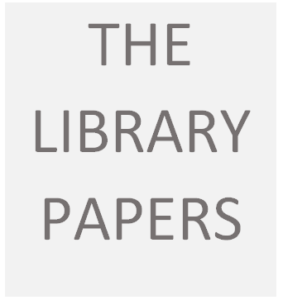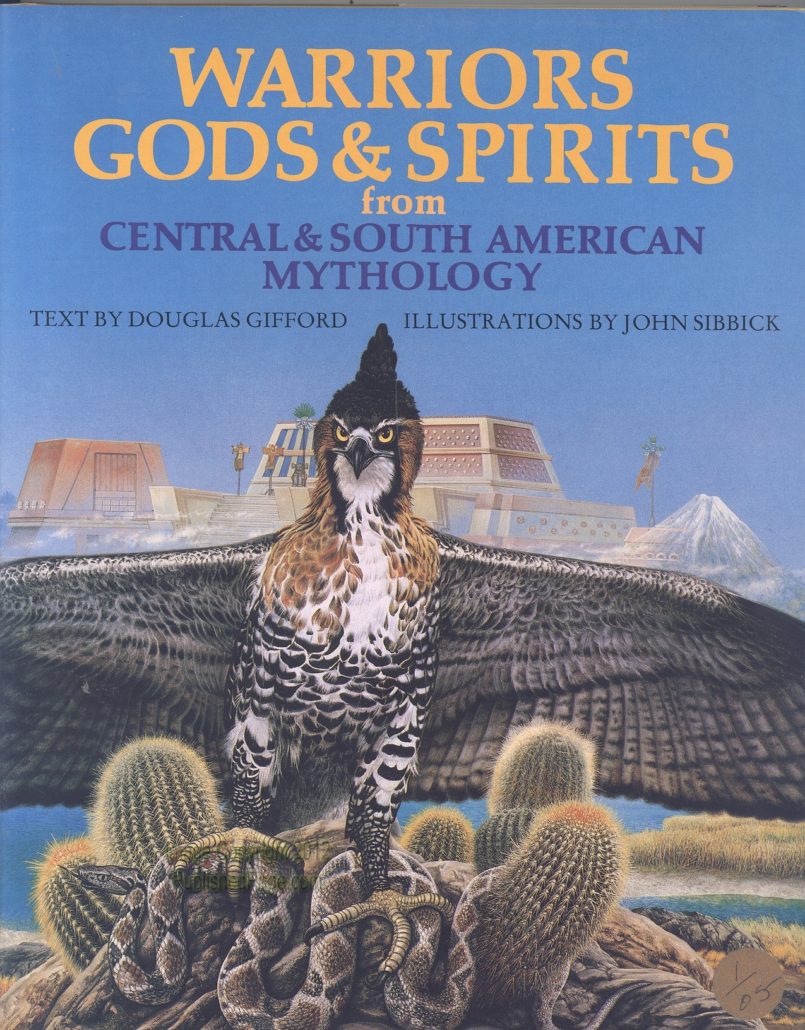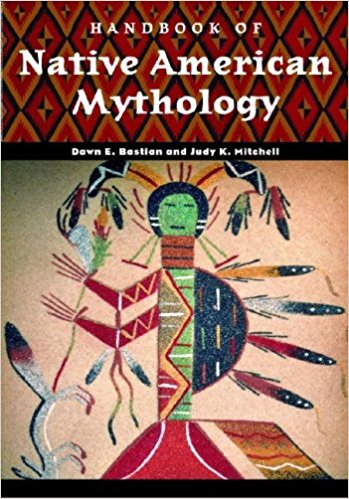Assignment 1
Evaluation of a Reference Work
Part 1 The Resource: World Mythologies (1977-1991)
| Note: The criteria in this table have been adapted from Reidling et al (2013). I have added two categories to her original ones: Relevancy and Curricular Connections. | |
| Content scope | This series of 13 books written by different authors over a period of 14 years from 1977 to 1991 is now out of print.
The purpose of the series is to provide information about ancient world religions from almost all parts of the world. The books in the series include stories from Jewish, Chinese, Indian, Celtic, Arab, Egyptian, Viking, Greek, Roman, Russian, African, and North, South and Central American traditions. |
| Relevancy |
|
| Curricular connections | This resource potentially serves Social Studies, ELL, and ELA curricula. The most frequent users are Social Studies teachers, then ELL teachers; ELA teachers have not used it much in the past, although there is increasing interest in classical Western mythology (in part due to wildly popular YA writer Rick Riordan’s use of characters from Greek and Norse myth traditions) and also Western folk and fairy tales. |
| Accuracy, authority, and bias | Although both the writing and the illustrations are high-quality, these books were written by British academics (of various ethnic backgrounds) and illustrated by British artists.
Only some of them of them were written by those from the relevant ethnic background. Although the selected material is culturally important and some of it is not widely available elsewhere, the collection needs to be balanced with as much indigenously created material as possible. |
| Arrangement and presentation | All the books in the series feature full-color maps of the relevant historical region
Most of them include an introductory chapter giving background information on the culture, history and geography of the area at the time the myths were created. Depending on the amount of material available, some of the books have longer thematically grouped chapters with additional background information preceding the stories; others just retell the most important of the myths, for the most part in chronological order. Either way, the predictable format makes the books more accessible for searching. There are plentiful illustrations throughout, showing important symbols, locations, events for the period and the area. There are indexes at the back of every book for names of people and places. |
| Relation to similar works | It is difficult to find a series which offers similar extensive coverage, and which features the voices of indigenous writers.
This collection is more representative of cultural mythologies than many series, which tend to be presented by continent rather than culture. |
| Timeliness and permanence | This series was written by different authors over a period of 19 years from 1977 to 1996 is now out of print.
According to Reidling (2013), all the works in this collection are too old even for works of historical reference (p 24). However, in its defence, because the information focuses exclusively on ancient traditions and territories, and there is no information about the contemporary culture/region, the material remains classic and relatively undated. The collection presents valuable historical information, but there is no connection to contemporary cultures, no indication of how or if the belief systems have evolved into present-day practices or vanished altogether. |
| Accessibility/diversity | Although the reading level would be acceptable for intermediate students, it is interesting enough and well-enough presented to be useful as a basic resource for secondary students with a range of reading abilities.
There are no additional sources given, and of course, because all the volumes were published before the wide availability of online sources, there are no links to additional material. |
| Cost | Unknown. The series is out of print. |
Part 2 The Resource: Handbooks of World Mythology (2000-2006)
| Content scope | This is a series of 11 books written by different authors over a period of 5 years from 2000 to 2005.
The purpose of the series is to provide information about ancient world religions from various parts of the world. The books in the series include stories from classical Greek and Roman, Chinese, Inca, native North American, Polynesian, Japanese, Hindu, Egyptian, Norse and Mesoamerican traditions. |
| Relevancy | This database addresses the need for global coverage of religious traditions from around the world, including areas not usually covered by most series, which tend to be continent-based rather than culture-based. |
| Curricular connections | Relevant to Social Studies and ELL, and ELA. |
| Accuracy, authority, and bias | The authors of this series are well-respected academics, frequently of the same ethnicity as the stories they retell. The books in the series are consistently well-reviewed by SLJ and Booklist, among others.
This is a characteristic review of the Handbook of Chinese Mythology from School Library Journal:
|
| Arrangement and presentation | There are maps, photos, reproductions of important artwork. Each volume has an extensive annotated bibliography for further reading, and a section with links to additional online resources.
The layout is clear, although as the reviewer above notes, the illustrations are not overly generous. And most volumes consist of single-column text. |
| Relation to similar works | The research and quality of the writing are high. The coverage is not as extensive as the World Mythology series, but it is more locally situated within specific cultures. |
| Timeliness and permanence | This series describes itself as ‘interactive’: the links to additional material, both print and digital are useful. ABC-CLIO is a large publishing company, and although no publishing company is ‘too big to fail,’ this one is likely to be around for a while—at least the 5-10 years Reidling recommends for currency of resources. |
| Accessibility/diversity | The volumes are clearly written, and easily accessible to a range of reading levels, although the single-column format and the somewhat restricted illustrations might be daunting to some.
The material has been selected to reflect as authentic a sample of indigenous cultures as possible. Short of individual works written by local authors, this collection seems acceptable. |
| Cost | These volumes are individually priced, ranging from $72 to $83 (American dollars). |
Works Cited
Click here for References
Al-Saleh, Khairat, and Rashad N. Salim. Fabled Cities, Princes and Jinn from Arabic Myths and Legends. Schocken, Douglas & McIntyre, 1985.
Ashkenazi, Michael. Handbook of Japanese Mythology. ABC-CLIO, 2003.
Bastian, Dawn E., and Judy K. Mitchell. Handbook of Native American Mythology (Handbooks of World Mythology). ABC-CLIO Interactive, 2004.
Branston, Brian, and Giovanni Caselli. Gods & Heroes from Viking Mythology. Schocken Books, 1982.
Caselli, Giovanni. Gods, Men & Monsters from the Greek Myths. Peter Lowe, 1977.
Craig, Robert D. Handbook of Polynesian Mythology (Handbooks of World Mythology). ABC-CLIO Interactive, 2004.
Gifford, Douglas, and John Sibbick. Warriors, Gods & Spirits from Central & South American Mythology. Schocken Books, 1983.
Hansen, William F. Handbook of Classical Mythology (Handbooks of World Mythology). ABC-CLIO Interactive, 2004.
Harris, Geraldine. Gods & Pharaohs from Egyptian Mythology. P. Bedrick Books, 1998.
Husain, Shahrukh, and Durga Prasad. Das. Demons, Gods & Holy Men from Indian Myths & Legends. Schocken Books, 1987.
Knappert, Jan, and Francisca Pelizzoli. Kings, Gods & Spirits from African Mythology. P. Bedrick Books, 1995.
Lindow, John. Handbook of Norse Mythology (Handbooks of World Mythology). ABC-CLIO Interactive, 2001.
Lothrop, P. D., & Grabarek, D. (2006). Handbook of Chinese Mythology. School Library Journal, 52(2), 89.
Patterson, Jose, and Claire Bushe. Stories of the Jewish People. P. Bedrick Books, 1991.
Pinch, Geraldine. Handbook of Egyptian Mythology (Handbooks of World Mythology). ABC-CLIO Interactive, 2002.
Read, Kay Almere, and Jason J. GonzaÌlez. Handbook of Mesoamerican Mythology. ABC-CLIO, 2000.
Riedling, Ann Marlow, et al. Reference Skills for the School Librarian: Tools and Tips. California, 2013.
Ross, Anne. Druids, Gods and Heroes from Celtic Mythology. Eurobook, 1986.
Sanders, Tao Tao Liu. Dragons, Gods & Spirits from Chinese Mythology. Schocken Books, 1983.
Steele, Paul. Handbook of Inca Mythology (Handbooks of World Mythology). ABC-CLIO Interactive, 2004.
Usher, Kerry, and John Sibbick. Heroes, Gods & Emperors from Roman Mythology. Peter Bedrick Books, 1992.
Warner, Elizabeth. Heroes, Monsters and Other Worlds from Russian Mythology. P. Bedrick Books, 1996.
Williams, George M. Handbook of Hindu Mythology (Handbooks of World Mythology). ABC-CLIO Interactive, 2003.
Wood, Marion, and John Sibbick. Spirits, Heroes & Hunters from North American Indian Mythology. Schocken Books, 1982.
Yang, Lihui, et al. Handbook of Chinese Mythology. ABC-CLIO, 2005.




